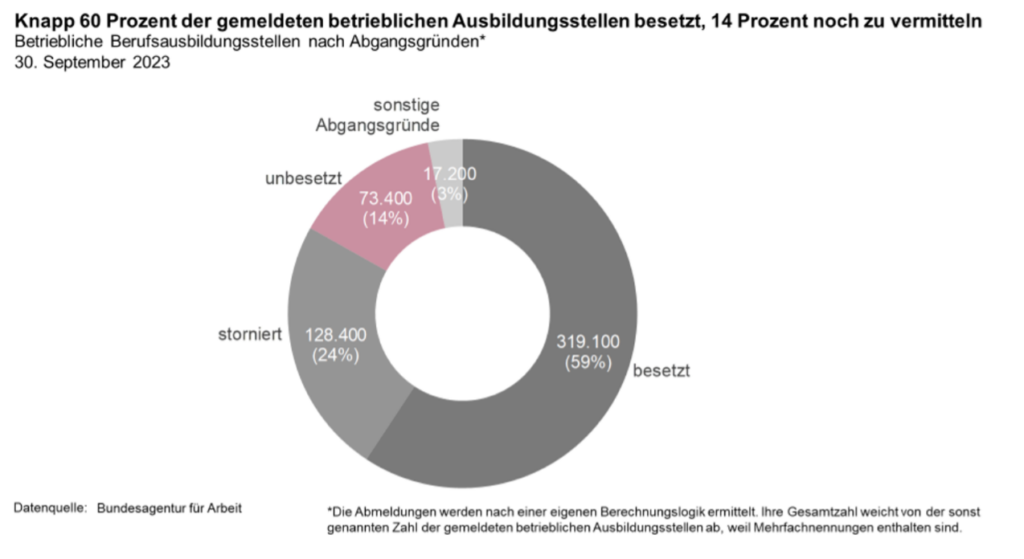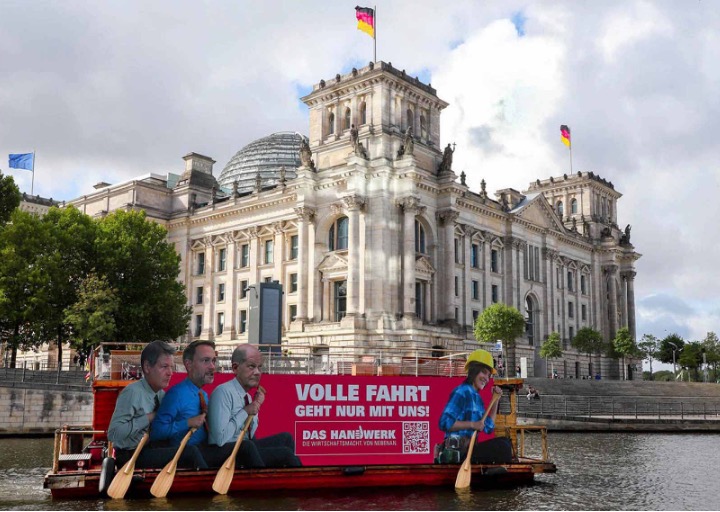“Das Handwerk”: Employer Branding for an entire Industry

It’s mid-February, the thermometer drops to minus degrees and, to make matters worse, the heating suddenly breaks down. Even as an emancipated woman, this would be where beads of sweat start forming on my forehead, despite the freezing cold in the living room, just thinking about when the mechanic I trust (or any mechanic in Berlin!) might have the earliest possible free appointment.
However, the current situation does not look rosy from the perspective of trade businesses either: Supply bottlenecks, price increases, uncertain markets and, last but not least, ever new bureaucratic requirements are making their daily work more difficult. In addition, there is a shortage of thousands of skilled workers and training positions remain unfilled.

Yet the skilled trades are so important: we cannot make progress on climate protection, digitalization, the mobility transition, infrastructure modernization or housing construction without a skilled workforce. For young people, this means above all that training in the skilled trades virtually guarantees a secure future. And yet there is still a shortage of young talent for the more than 130 skilled trades. Maybe it’s the bad image?
Poorly paid, Male-dominated and Old-fashioned
Admittedly, the industry’s reputation is not exactly the best. Wrongly so, as the Association of German Chambers of Skilled Crafts impressively demonstrates:
Because…
- 363,000 young people are currently learning a trade – that’s around 28 percent of all trainees. Around 140,000 new ones are added every year.
- Craftsmanship makes you happy! 91 percent of employees are proud of their job and their performance, confirms a study by the University of Göttingen.
- So much for male-dominated! Every fourth craft business is founded by a female entrepreneur. And one in five people in the skilled trades is a master craftsman. This makes it all the more important to approach women directly when looking for employees. In our article on female employer branding, we show how to.
- A master’s degree is equivalent to a bachelor’s degree. In a direct comparison, master craftspeople earn an average of 1.9 million euros in a lifetime, which is equal to the lifetime earnings of academics.
How do we get hold of young Talent? Or: Employer Branding makes Employers attractive
The term employer branding describes a company’s efforts to build a positive and attractive employer brand in order to attract, retain and motivate talented employees. The image as a potential supervisor is strategically modeled. Which measures best embody your own values? What makes the company attractive to new employees? What does the company stand for? Questions upon questions, but don’t worry: our workshop, for example, offers a good introduction to the topic, in which corporate values and vision can be developed.
Successful employer branding creates a positive working environment, promotes the corporate culture and highlights the unique selling points that make the company particularly attractive as an employer.
Here are 10 ways to incorporate storytelling into employer branding.
“Rethinking the Skilled Trades”: Making Apprenticeships more attractive again
In its campaign launched in 2023, the Chamber of Skilled Crafts has set itself the goal of making apprenticeships in its sector more attractive again. Under the motto “Rethinking the skilled trades”, they show how varied, exciting and fulfilling it is to work in this sector. And with success, we think!
5 Things that Companies can learn from the Chamber of Skilled Crafts:
1. breaking down prejudices: The main protagonists of the current campaign are 16 tradespeople from “real life”. With their personal success stories, they offer insights into their day-to-day work and consistently dispel stereotypes with a wink.
2. Show stories that touch: There are countless testimonial stories on the Berufsinsider site, such as that of Marcus Ostendorf. They show everyday working life in various trades and take an authentic look behind the scenes.
3. Use media and topics that are in tune with the times: The campaign also impressively demonstrates that the skilled trades are diverse and certainly not outdated with its podcast “Who’s making tomorrow?” In each episode, presenter Anna Planken discusses relevant questions that will reach the young talents of tomorrow, such as “Workbench or lecture hall? Ideally both!”.
The topics of climate protection and sustainability are also an essential part of the new campaign. And rightly so, because this is exactly what the next generation of employees is concerned with. The initiative describes it very aptly: Full speed ahead is only possible with us.

4. Set up appealing career pages: Training content, remuneration and exclusive insights are clearly presented alongside all other important key data for the individual trades. The institution has also compiled tips on how to start a successful career after training.
If you lose track of over 130 professions and don’t really know which job to choose, it’s best to take this test or get advice from the chatbot set up especially for this purpose. By the way, my top craft professions are dressmaker, goldsmith and milliner. So if PR doesn’t work out, you might soon find me in a goldsmith’s workshop.
We have put together a few exciting examples of successful storytelling on job pages.
5. Act as a mentor: In addition to countless reports, transparent job and salary descriptions and entertaining career tests, the association has also set up an advice center for trainees and interested parties. Here, enquirers are connected directly to the Chamber of Skilled Crafts responsible for them. The site also offers a guide for creating an application portfolio and helpful tips for making a successful first impression. This gives potential trainees a sense of security and can encourage them in their decision to choose a career in the skilled trades.
Strabag and Henkel, for example, show what successful employer branding can look like.
Conclusion: Hand in Hand for a successful Future
The skilled trades sector is facing a wide range of challenges, from supply bottlenecks to uncertain markets and, not least, a shortage of skilled workers. Employer branding is a key element in counteracting the latter. A successful strategy emphasizes the corporate culture, offers career opportunities and demonstrates an attractive working environment. However, some steps are difficult to implement, especially for small companies – it is impossible to do away with the industry’s outdated reputation.
This is where the Chamber of Crafts campaign comes in. Through targeted and well thought-out measures, it makes the occupational field more attractive, raises awareness, creates prospects and offers prospective trainees an all-round carefree package. In this way, trade businesses can not only master their current challenges, but also shape a sustainable future for the entire industry.
Would you like to know how employer branding already works in the construction industry? Take a look at our Storytelling-Report 2023
Share this article








